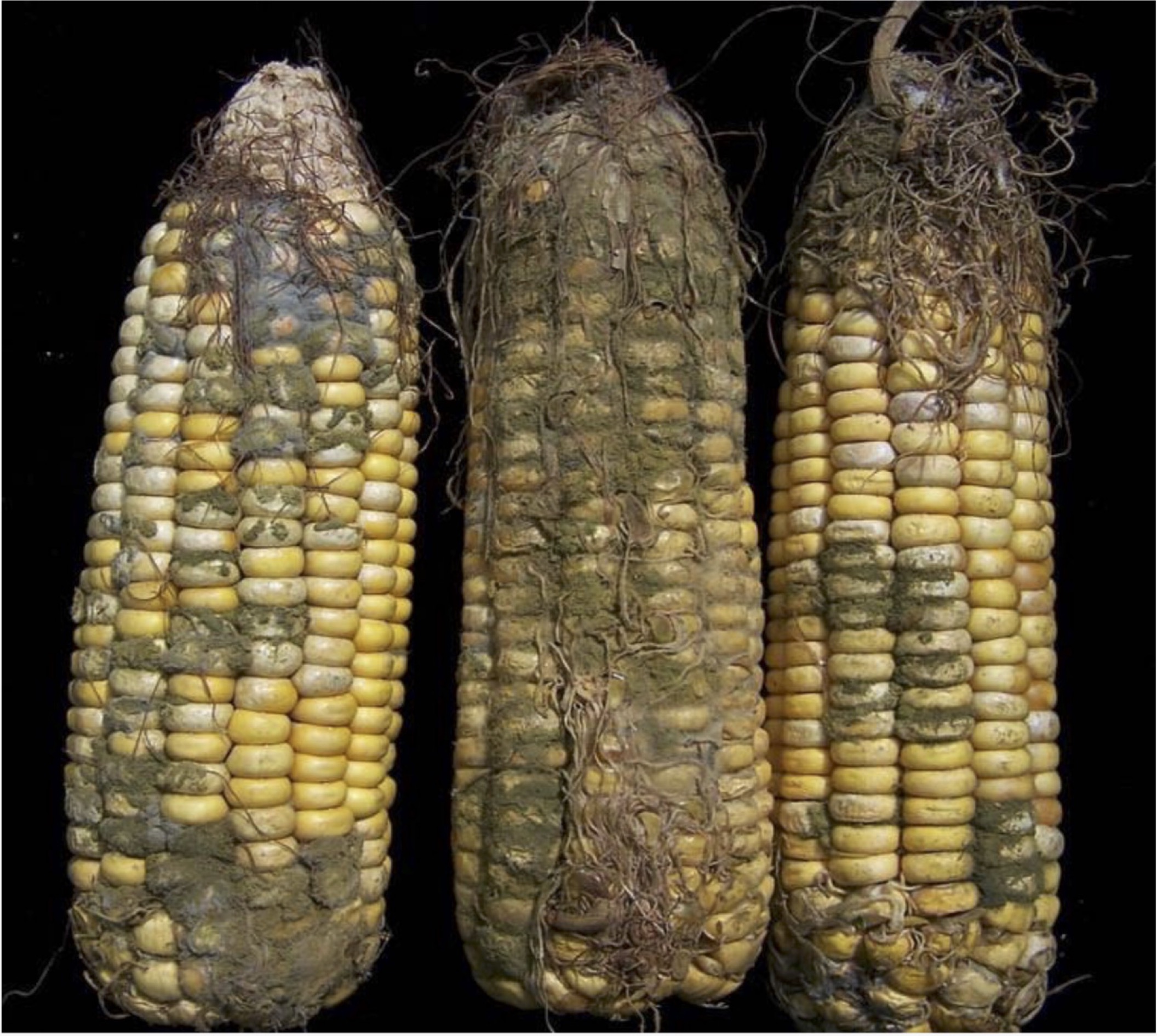The Challenge
Ear rots of corn are economically important mid- to late-season diseases that are caused by multiple fungal pathogens. Few effective treatment options are available, and genetic resistance is limited. In addition to the yield losses caused by these fungi, they also produce compounds called mycotoxins that are toxic to humans and livestock. Mycotoxin-contaminated grain must be diluted in the case of low levels of contamination, or removed from the food supply in the case of high levels. In developing countries, mycotoxin screening is generally not available, and consumption of contaminated grain causes human health issues such as stunting in children and cancer in adults. Corn plants that are stressed by other diseases, drought, heat stress or poor nutrition are more vulnerable to infection. Fungicide treatments are generally not effective.
The strategy
Building from an earlier program run by the 2Blades Group at the The Sainsbury Laboratory in collaboration with Bayer Crop Science, 2Blades is testing its immune receptor

Corn ears contaminated by Aspergillus. Photo credit IITA from https://ehp.niehs.nih.gov/doi/epdf/10.1289/ehp.121-a270
discovery platforms to seek resistance to the fungi causing these diseases. We are focusing efforts on the two most notorious toxin-producing fungi – Fusarium and Aspergillus – using multiple approaches to thwart their stealthy growth habits. By preventing infection in corn, we can protect not only the people and animals who are sickened by mycotoxins, but also corn harvests.
The science
Infection of ears generally occurs through wounds or through the silks. Ear rots caused by Fusarium graminearum and Aspergillus flavus produce widespread and highly toxic mycotoxins, respectively. The most important of these are deoxynivalenol (DON, or vomitoxin) produced by Fusarium graminearum and aflatoxin produced by Aspergillus flavus. We are testing multiple approaches making use of 2Blades proprietary pathogen receptor resources and further novel approaches to building plant immunity
 2Blades
2Blades